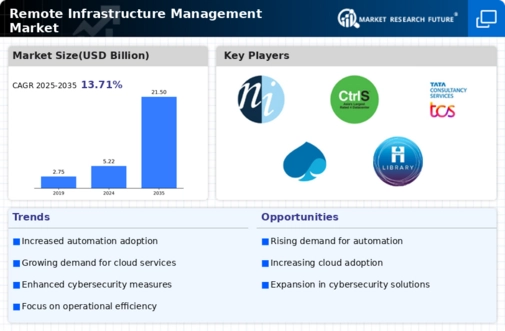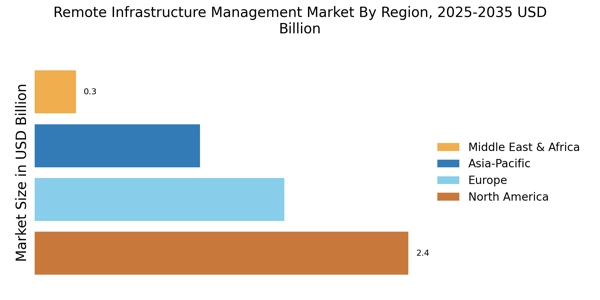Remote Infrastructure Management market Summary
As per MRFR analysis, the Remote Infrastructure Management Market Size was estimated at 5.22 USD Billion in 2024. The Remote Infrastructure Management industry is projected to grow from 5.936 USD Billion in 2025 to 21.46 USD Billion by 2035, exhibiting a compound annual growth rate (CAGR) of 13.71 during the forecast period 2025 - 2035.
Key Market Trends & Highlights
The Remote Infrastructure Management Market is experiencing robust growth driven by technological advancements and evolving business needs.
- The market is witnessing increased adoption of cloud solutions, particularly in North America, which remains the largest market.
- Integration of advanced technologies is becoming prevalent, especially in the Asia-Pacific region, which is recognized as the fastest-growing area.
- There is a heightened focus on cybersecurity measures across both cloud and on-premises segments, with cloud being the largest segment.
- The growing demand for cost efficiency and operational resilience is driving market expansion, particularly in server management and network & communication management segments.
Market Size & Forecast
| 2024 Market Size | 5.22 (USD Billion) |
| 2035 Market Size | 21.46 (USD Billion) |
| CAGR (2025 - 2035) | 13.71% |
Major Players
IBM (US), Hewlett Packard Enterprise (US), Cisco Systems (US), Dell Technologies (US), Accenture (IE), Wipro (IN), Tata Consultancy Services (IN), Fujitsu (JP), Atos (FR), Capgemini (FR)


















Leave a Comment